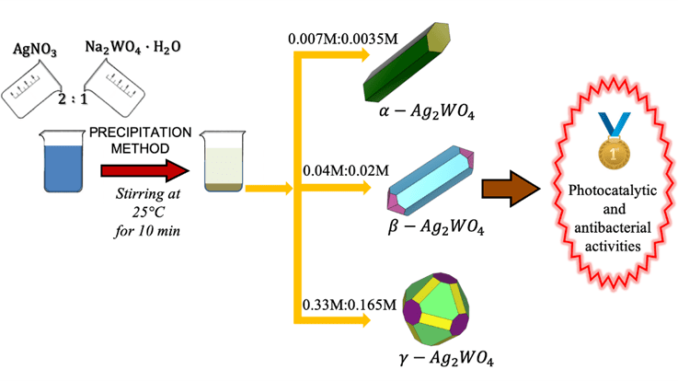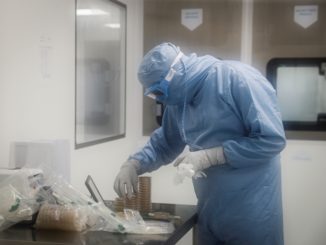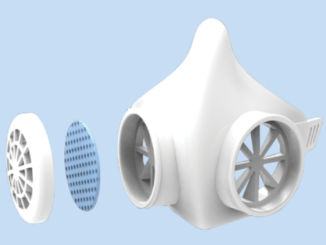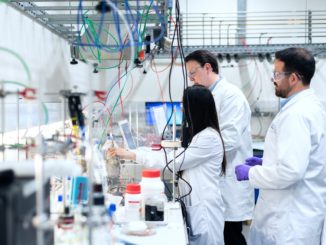
Researchers from the Theoretical and Computational Chemistry Laboratory (QTC) of the Jaume I University of Castellón (UJI) have developed new antibacterial and photocatalytic materials to eliminate medicines from wastewater.
The study, performed in collaboration with the Centre for the Development of Functional Materials (CDMF) of the Universidade Federal de São Carlos (UFSCar), has been described in a paper titled “Selective Synthesis of α-, β-, and γ-Ag2WO4 Polymorphs: Promising Platforms for Photocatalytic and Antibacterial Materials” published in the scientific journal Inorganic Chemistry.
The researchers propose a process, which involves an easy technique at ambient temperature and without the use of surfactants, enabling the selective synthesis of silver tungstate polymorphs (Ag2WO4), called α-, β-, and γ.
The two advantages make it simpler to manufacture such materials on an industrial scale. Moreover, the study discusses the probable antimicrobial and photocatalytic mechanisms of the polymorphs, as well as the processes of their growth and formation.
At first, researchers selectively synthesized silver tungsten polymorphs (phases α, β, and γ) through precipitation, regulating the volumetric relations of the two dissolution precursors: sodium tungsten and silver nitrate.
Once they reach beyond these phases, the electronic, microstructural, and structural properties of the material were analyzed by employing a combination of experimental methods.
The structure-activity relations between the photocatalytic and morphology activities were then examined on ultraviolet light radiation, placing a unique emphasis on the degradation of the amiloride medicine—a diuretic that inhibits the body from absorbing excessive salt and helps regulate sodium levels—and antibacterial properties for the elimination of Staphylococcus aureus (which is penicillin-resistant).
Various analysis and characterization methods were employed in the study, like X-ray absorption spectroscopy, X-ray diffraction and Rietveld refinement, field emission scanning electron microscopy, photoluminescence images, and others. First-principle calculations were performed on the functional theory of density.
The researchers will perform computational and theoretical studies to augment and rationalize the experimental outcomes, which have offered in-depth insights into the atomic level, external surfaces, and morphology of silver tungsten polymorphs, which form the basis of antibacterial and photocatalytic activities.
The study results indicate that although α-Ag2WO4 was the most stable and most studied phase, β-Ag2WO4 returned the best outcomes for the investigated applications.
” Now we want to research other behaviours and uses of the β- and γ-Ag2WO4 phases, the least stables ones, and therefore, the ones that have least been studied until now.
Juan Andrés, Lecturer and Director, Theoretical and Computational Chemistry Laboratory, Jaume I University of Castellón
Andrés is the lead researcher of this project. For more than three decades, the collaboration between the CDMF and the QTC laboratory has made it feasible to achieve new materials and technologies, thereby publishing more than 80 articles on semiconductors in the most renowned journals on physics, chemistry, nanotechnology, and materials science.
Journal Reference:
Alvarez-Roca, R., et al. (2021) Selective Synthesis of α-, β-, and γ-Ag2WO4 Polymorphs: Promising Platforms for Photocatalytic and Antibacterial Materials. Inorganic Chemistry. doi.org/10.1021/acs.inorgchem.0c03186.
First on AZO Materials
______________________________________________________________________________
CDMF
CDMF is one of the Research, Innovation and Dissemination Centers (Cepids) supported by the São Paulo State Research Support Foundation (Fapesp), and also receives investment from the National Council for Scientific and Technological Development (CNPq), linked to the National Institute of Science and Technology of Materials in Nanotechnology (INCTMN).



